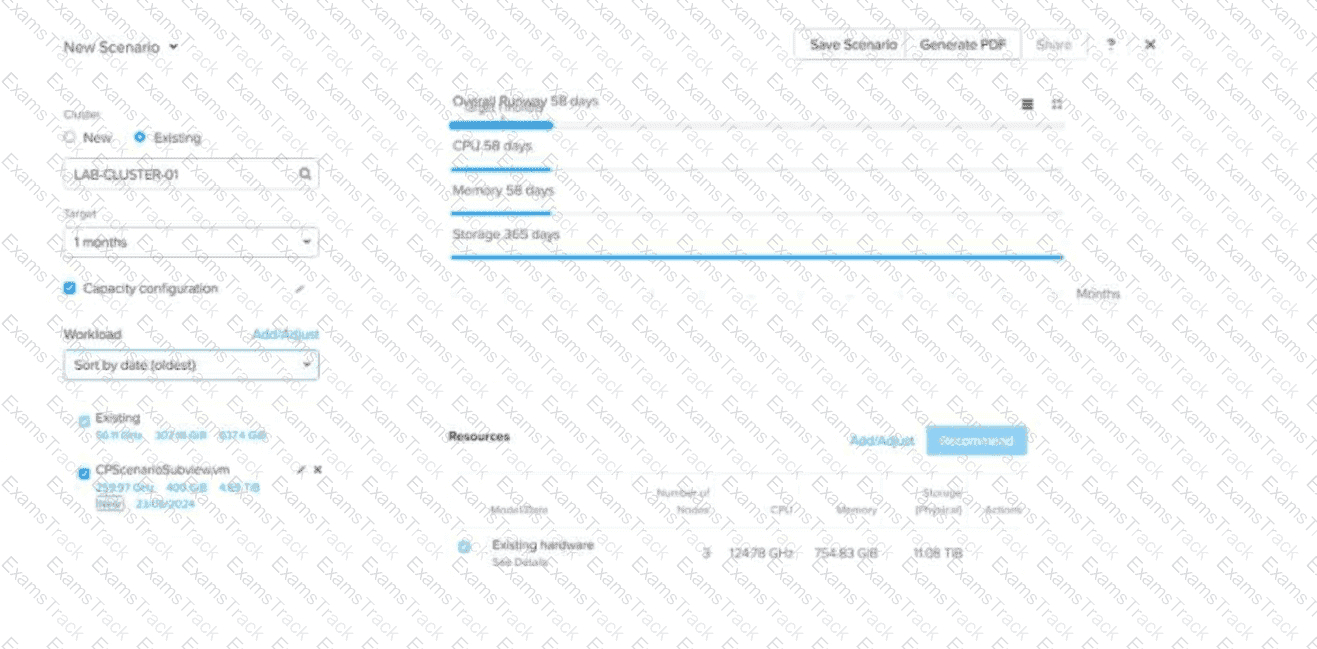An administrator needs tooptimize a VM’s storageby leveragingcompression features. The VM’svDisksare currently stored in adefault storage containerwithno optimizations enabled.
How should the administrator proceed?
An administrator started anLCM upgrade of the AHV hostsbut realized that theupgrade would exceed the planned maintenance window.
Which feature should be leveraged to prevent additional updates from occurring?
An administrator is trying to configure Metro Availability between Nutanix ESXi-based clusters. However, theCompatible Remote Sitesscreen does not list all required storage containers.
Which two reasons could be a cause for this issue? (Choose two.)
Refer to Exhibit:

After adding new workloads, why isOverall Runway below 365 daysand the scenario still shows the cluster is in good shape?
An administrator is configuring a protection domain for business critical applications, including SQL, Oracle, and Exchange. The administrator needs to evaluate the requirements and limitations for application-consistent snapshots.
What action should the administrator take while configuring application-consistent snapshots?
A new employee has inherited a partially configured Disaster Recovery (DR) schema. Source workloads have been identified and Nutanix Guest Tools has been installed.
There are two Protection Polices in place, one with an asynchronous schedule with a 1-hour RPO and a second policy utilizing synchronous replication. All of these workloads need to be recovered at a DR location and this will be orchestrated by Prism Central Recovery Plans.
What is the best way to setup this recovery orchestration?
Due to requirements from the network team, a Nutanix administrator must create User VMs on VLAN 10 on multiple AHV clusters.
What network configuration should the administrator consider in order to ensure consistent connectivity for User VMs on VLAN 10?
What feature does Nutanix provide to enable asynchronous replication for disaster recovery?
An administrator is preparing for afirmware upgradeon a host and wants to manuallymigrate VMs before executing the LCM upgrade. However,one VM is unable to migratewhile others migrate successfully.
Which action would fix the issue?
Per organizational requirements, an administrator has uploaded a signed SSL certificate to Prism for Common Access Card (CAC) authentication.
Once the certificate has been uploaded successfully, the certificate appears to be valid but CAC authentication is not functional.
What is a potential cause of this problem?
|
PDF + Testing Engine
|
|---|
|
$49.5 |
|
Testing Engine
|
|---|
|
$37.5 |
|
PDF (Q&A)
|
|---|
|
$31.5 |
Nutanix Free Exams |
|---|

|